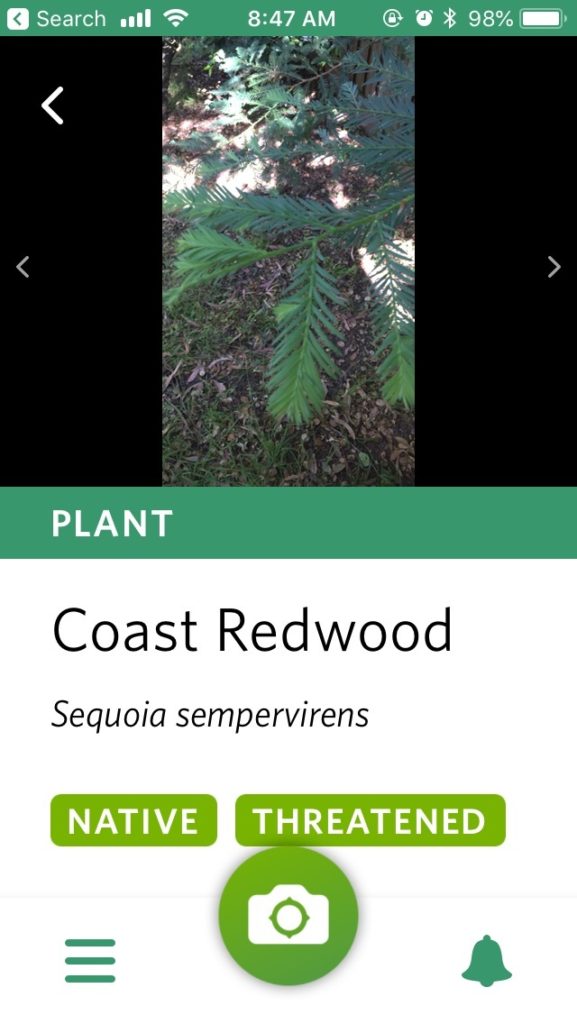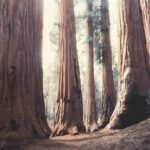
I live on a steep hillside with several enormous and non-native Eucalyptus trees. They dominate the scene, so much so that I didn’t really notice the presence of a native & threatened species—Sequoia sempervirens—camouflaged just on the other side of my neighbors’ 6-foot wooden fence. But within 3 minutes of opening and using the Seek V2 app by iNaturalist, I had identified the Coast Redwood tree that I walk by everyday. And I had learned that this species which includes the tallest living trees on earth, can live 1200–1800 years. Respect.
Seek was created by the iNaturalist team at the California Academy of Sciences in San Francisco. I had tried V1 but found it frustrating to use and abandoned it quickly. There it sat on my iPhone, along with my other abandoned apps, gathering pixel dust. Apparently I was not alone in this frustration. So they fixed it. And I have to say, they really got it right this time.
The iNaturalist team writes in an announcement about V2:
“In Seek v1, which launched in March 2018…you needed to take a photo before you had a sense of whether or not it was even identifiable by Seek. This caused frustration when people repeatedly experienced the lack of a computer vision match. Now, since you can see predictions overlayed on the camera you get immediate feedback about what you see and the specificity with which Seek can identify it.
The species included in Seek are based entirely on photos and identifications made by the global iNaturalist community, so the Seek camera will work best in places where there is already an active community of iNaturalist users, and for species that are easily identified from photos. Seek also uses data submitted to iNaturalist to show suggestions for ‘species nearby,’ but unlike iNaturalist, findings made with Seek will not be shared publicly, making it safe for children to use.
Seek is geared to encourage outdoor exploration of wild biodiversity (rather than pets, zoo animals, or garden plants). We hope kids, families, educators, and anyone into games will start exploring their natural surroundings with Seek, and we want this to inspire the next generation of biodiversity stewards by encouraging exploration and unlocking the names of species as a way to learn more about them. We want to make it easier for curious people who may not consider themselves naturalists to learn more about nature.”
Read this review by Eric Simmons, digital editor at Bay Nature, my favorite local magazine, about his experience taking Seek V2 out for a spin. You’ll learn more about how the computer vision works in this augmented reality app, and how the artificial intelligence trains to identify your images.
Make your family explorations of AI hands-on and grounded in learning about your local nature (for some guidance on family conversations about AI, revisit the second part of this post I wrote a month ago ). Try Seek. And do let me know how it goes. I would love to hear from you. Contact me here.


